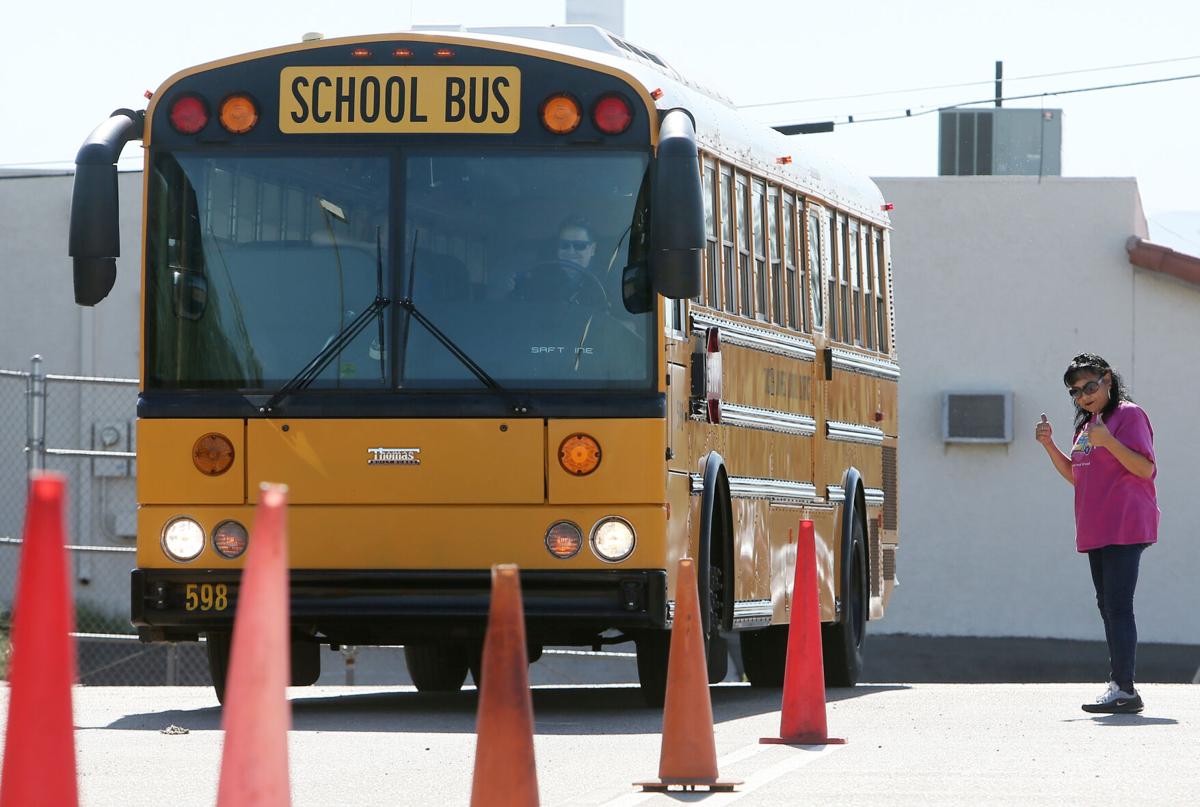There is a severe bus driver shortage in some Tucson school districts, with at least 178 positions still open for the upcoming school year. School districts are raising pay rates and employing innovative ways to attract drivers in an effort to keep the shortage from affecting students.
Tucson Unified, which serves nearly 42,000 students, recently raised the starting wage for bus drivers to $16 an hour in hopes of filling 113 open bus driver positions.
The previous rate of $13.35 was nearly $2 below the average rate among other school districts and public sector bus driver positions throughout the state, according to a presentation at an April board meeting by a consulting firm hired by the district.
The salary adjustment was needed to avoid compromising operations in a serious way, Superintendent Gabriel Trujillo said during the April board meeting. The district had 24 additional bus driver openings at the time.
While more extreme this year, the bus driver shortage is not new for a position that typically comes with low pay and with odd hours, often forcing employees to take four-hour unpaid breaks in the middle of the day while students are in school.
Like TUSD, many local school districts are raising bus drivers’ hourly rate by a substantial amount to recruit new drivers. Many school districts also offer benefits and free training for this high-demand position.
The Amphitheater school district, which serves nearly 12,000 students, managed to resolve what it called a “transportation crisis” by eliminating 20 unfilled driver positions, which had been open for more than two years, by adjusting school start and release times to allow fewer drivers to cover more routes.
“It was a good plan,” says spokeswoman Michelle Valenzuela. “It was upsetting to some parents, but it was absolutely essential because we could not sustain the routes the way they were. We just could not staff them.”
Before the change, the district’s transportation department had to pull other staff members who have the proper licensing to help run routes, including office staff and mechanics, away from their normal duties.
They also attempted to recruit special education teaching assistants to train and obtain proper licensing to drive the students they serve to and from school on a district bus.
And even with all those changes, there were times when kids had to wait a long time for the bus to arrive.
The district also used the savings from the cut positions to raise the starting wage by $2.38 an hour to $16.50 per hour.
Even with the changes, Amphi still has to fill 19 driver positions, and it is holding additional pop-up job fairs.
Sunnyside, serving about 15,000 students, has 22 bus driver positions to fill for next year, which spokeswoman Marisela Felix says is higher than usual for this time of year.
With about six to seven weeks fill those positions, the district is working on a yet-to-be-determined Plan B in case it is unable to.
Vail School District, serving about 13,600 students, still needs to hire 15 bus drivers. Like many other districts, Vail offers free on-the-job-training. The school board was scheduled to consider a 2.5% raise for all returning bus drivers and raising the starting wage to $16.04 an hour during a board meeting on June 8.





